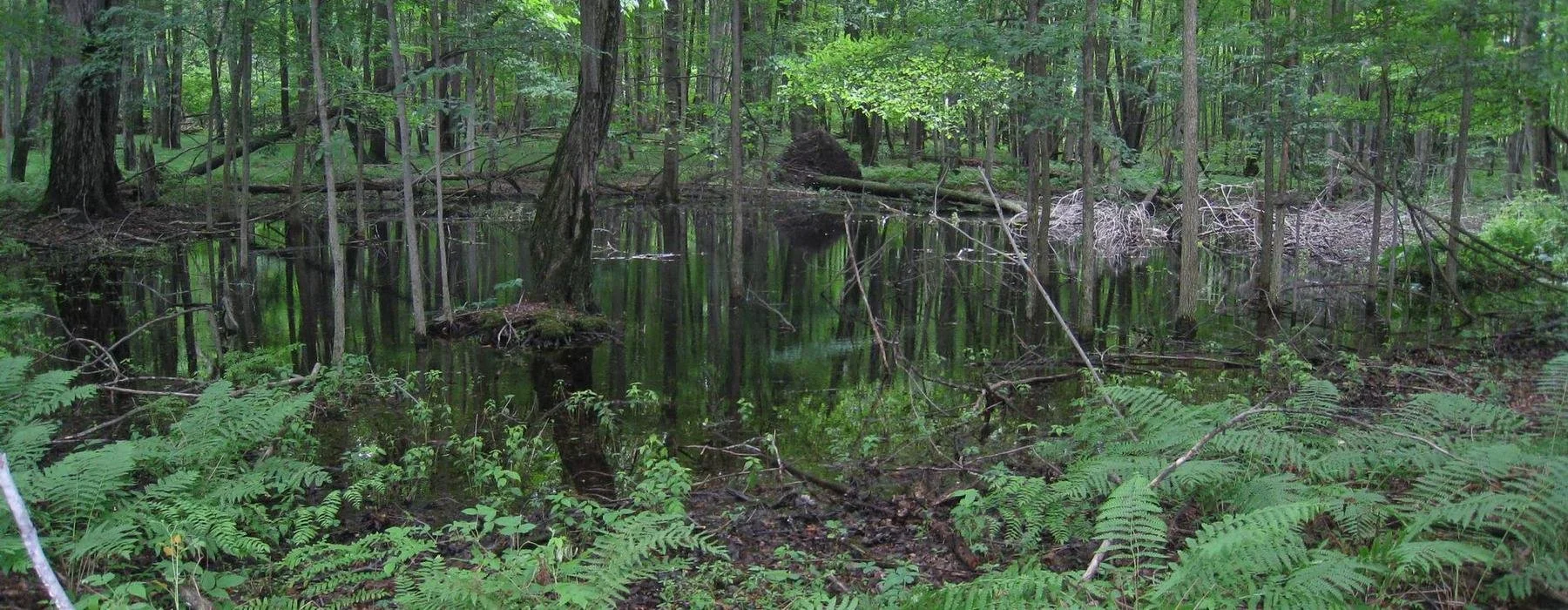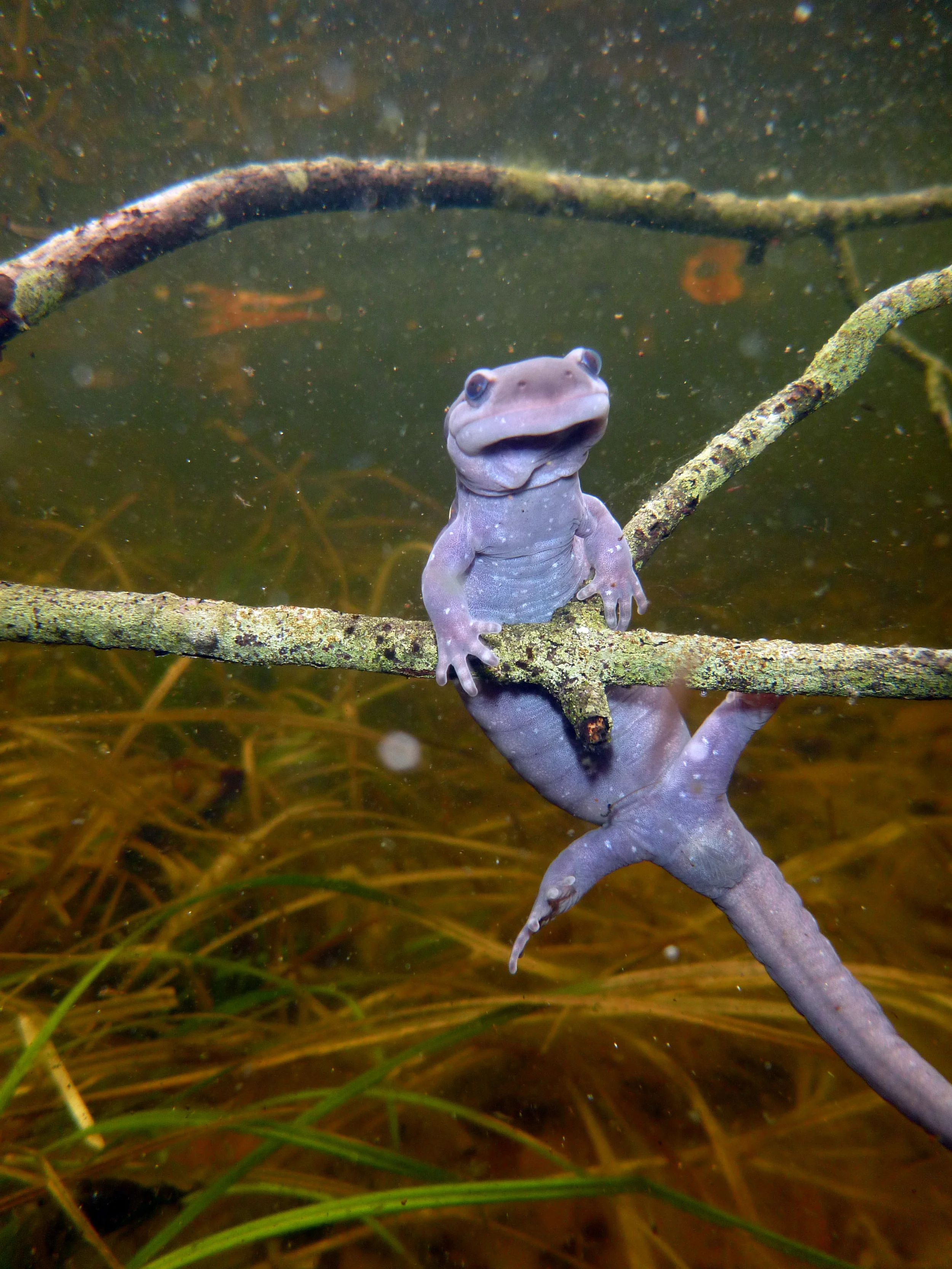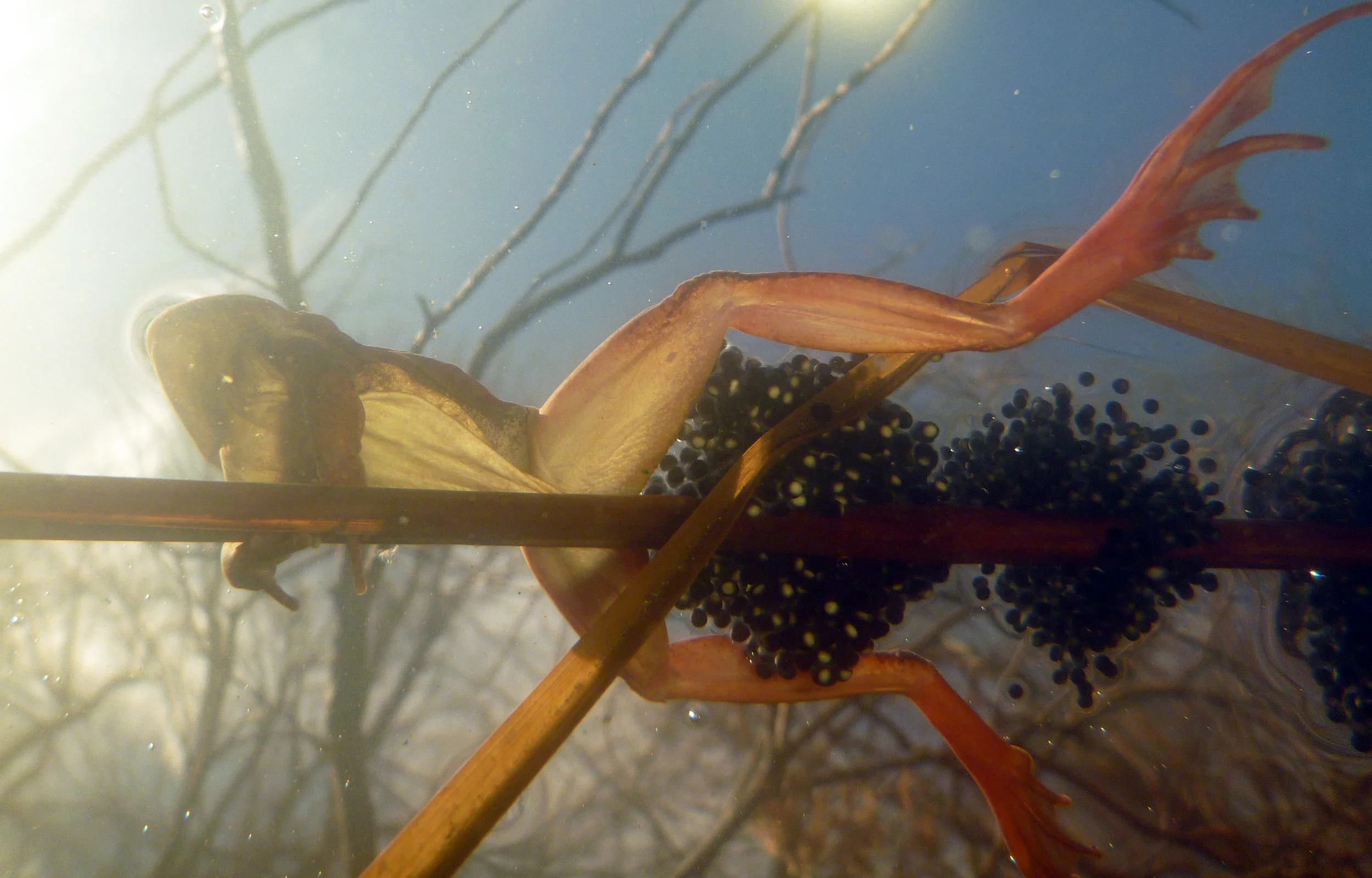Vernal Pool Refugia
Vernal Pool refugia
What are vernal pools?
Vernal pools are temporary aquatic habitats. While their presence varies from days to weeks to months, their contribution to the faunal diversity of forests is disproportionately large compared to their temporal and spatial presence. Several amphibian and macroinvertebrate species use these habitats exclusively for breeding and larval development.
Marbled Salamanders: Apex predator
Mark Urban and his research lab at the University of Connecticut are working to understand the ecological and evolutionary resilience of vernal pool organisms in reference to climate change. More specifically, they are studying whether dispersal or local evolution can facilitate ecological and evolutionary rescue in response to the climate-fueled expansion of an apex predator, the marbled salamander.
As winters warm in New England, the marbled salamander rapidly colonizes newly suitable temporary ponds. Marbled salamanders are apex predators that strongly influence community structure and energy pathways, shifting pools to a state characterized by low diversity, few herbivores, and high primary production. Perhaps most surprisingly, they found micro-geographic adaptation of spotted salamanders and wood frogs that live in ponds with marbled salamanders. Most recently the team aims to explore the degree to which vernal pool ecosystems might resist changes initiated by this expanding apex consumer.
Resistance might originate from 1) the immigration of species that can restore diversity and replace lost functional roles and 2) the adaptive evolution of other amphibian species previously shown to mediate the impacts of the apex predator on community structure. All in all they hope to build more biologically realistic models of climate change responses in this system and others in order to identify climate change refugia and threats to organisms and ecosystems.
Other Efforts
Bruce Wenning with the Ecological Landscape Alliance - Strategies to Protect Vernal Pools in the Built Environment: Raising Awareness
Mapping Vernal Pool Refugia Across the Northeastern U.S. - This project will combine existing and additional hydrological and climate data in order to study vernal pools. In particular, this project seeks to identify watershed characteristics that can be used to predict ecologically important features of vernal pool hydrology, such as spring inundation level and spring-to-summer change in inundation.
Massachusetts's Wetlands Protection Act - Vernal pools are technically protected under the Massachusetts Wetlands Protection Act if they meet the definitions of "wetlands" under that law. "Wetlands" include vegetated wetlands bordering on water bodies, areas within 200 feet of a river (25 feet in certain urban areas), and lands subject to flooding.
Monitoring Vernal Pool Amphibians in the Northeast - In 2004, the Northeast Amphibian Research Monitoring Initiative (NE ARMI) received funding from the National Park Service’s Park Oriented Biological Support, and combined these monies with ARMI funds to initiate a region-wide study on the distribution of vernal pools and estimate the proportion of pools that were occupied by pool-associated amphibians (specifically, wood frogs, Lithobates sylvaticus, and spotted salamanders, Ambystoma maculatum).
Of Pools and People - Understanding the vital connections between landowner concerns, municipal planning, conservation activities, and the ecology of vernal pools will be the focus of natural and social scientists from the University of Maine, Clark University, and Bowdoin College as they embark on a multi-year research project concerning Maine’s small natural features—vernal pools.
United States Forest Service: Ecology of Woodland Vernal Pools - A series of integrated studies on individual pool dynamics, landscape-level effects on faunal populations, and effects of past land use on woodland vernal pool faunal composition will lead to more complete knowledge of pool dynamics and wildlife habitat values.
Vernal Pool Mapping and Conservation - Conserving important habitat for amphibians and other wildlife. A compilation of vernal pool mapping efforts across the North Atlantic region by the North Atlantic Landscape Conservation Cooperative.
relevant rrc publications
Cartwright, J., Morelli, T.L., Grant, E.H.C. 2022. Identifying climate-resistant vernal pools: Hydrologic refugia for amphibian reproduction under droughts and climate change. Ecohydrology. https://doi.org/10.1002/eco.2354 .






